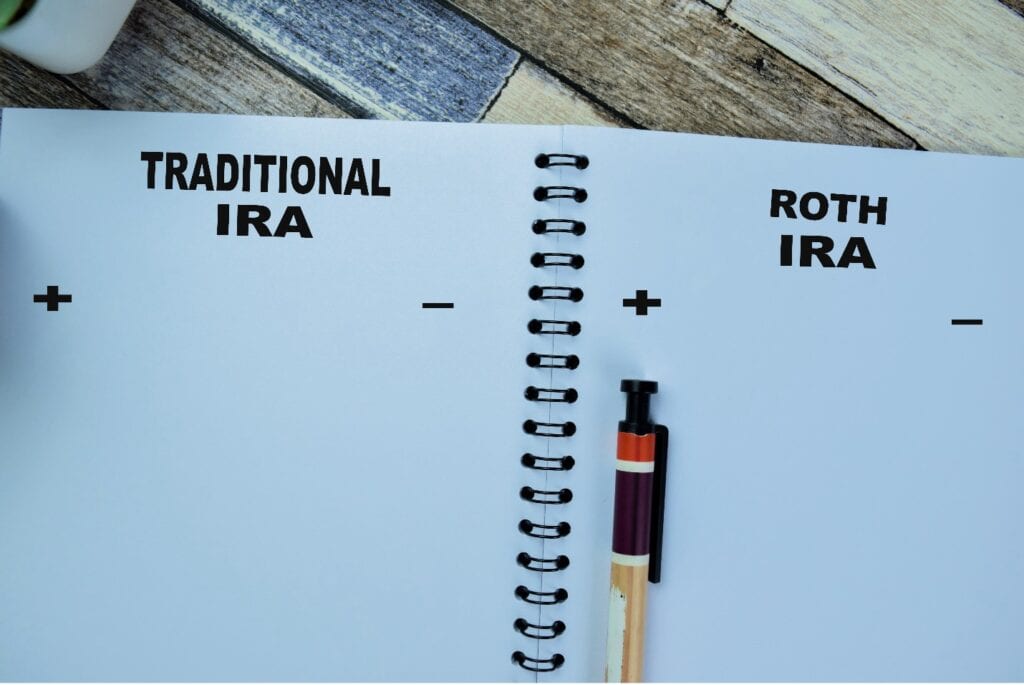As the end of the year approaches, it’s crucial to consider various tax strategies that can help optimize your financial situation. Engaging in year-end tax planning is not only about fulfilling a responsibility but also about seizing opportunities to reduce tax liability and enhance financial well-being for the upcoming year.
Introduction to Tax Planning
Tax planning is not just a task for April; it’s an important consideration all year long. It becomes especially important as the year draws to a close. With December 31 approaching quickly, taking steps to minimize your tax liability now can pay dividends for your financial health at tax time next year.

The Importance of Year-End Tax Planning
Year-end tax planning should be a key part of your financial strategy. It’s all about proactively and carefully assessing your income, expenses, and potential tax liability for the year. By taking strategic steps before the year ends, you can effectively reduce your tax obligations.
So, what can you do to make the most of your year-end tax planning? Let’s dive into steps you can take to end this year well and go into next year on the right foot.
#1: Deferring and Accelerating Income
If you can control the timing of your income, you might benefit from deferring some of it to next year. The result will potentially reduce your current year’s tax liability. However, there are also advantages to accelerating your income. Let’s look at both options.
Strategies for Deferring Income
There are several strategies you can use to defer your income. One standard method is to delay bonuses or commissions until the following tax year. If you are self-employed, consider delaying invoices for your year-end jobs until the new year.
If you are an employee and your employer offers a deferred compensation plan, consider participating. The plan will allow you to defer your income and pay taxes later.
Potential Drawbacks
However, please note that there are potential drawbacks to consider when you defer your income. Income deferral or accelerating deductions might not be to you advantage if you expect to fall into a higher tax bracket in the upcoming year. In addition, while delaying invoices can defer income, it can negatively impact your cash flow.
Advantages of Accelerating Income
In certain circumstances, accelerating income—that is, making efforts to pull income into the current tax year instead of the next one—can be a beneficial strategy. This approach may prove advantageous if you anticipate being in a higher tax bracket next year, either due to a raise, a new job, or another increase in income.
Accelerating income can allow you to take advantage of your current, lower tax bracket for a larger portion of your income. Also, if the tax laws change in a way that might increase your tax liability in the future, bringing in more revenue in the current tax year can help reduce the impact.
Also, when you accelerate income, you can make larger contributions to tax-advantaged accounts like IRAs or 401(k)s. This strategy can provide dual benefits, growing your retirement savings while reducing your taxable income for the current year.
#2: Maximize Your Deductions
Before year end, make sure you’ve taken advantage of all available deductions to lower your taxable income.
You have the choice between taking the standard deduction or itemizing deductions. Your choice should be based on which option lowers your tax liability the most.
Standard Deduction
The standard deduction is a fixed dollar amount that reduces the amount of income subject to taxation. Its value varies based on your filing status (such as single or married filing jointly) and is adjusted annually to account for inflation.
For the tax year 2023, the standard deduction amounts are as follows:
- $13,850 for single taxpayers and married individuals filing separately.
- $27,700 for married couples filing jointly.
- $20,800 for heads of households.
Source: Tax Year 2023 | Internal Revenue Service
Itemized Deductions
Itemized deductions allow taxpayers to claim eligible expenses incurred during the tax year for tax purposes. Common examples of itemized deductions include:
- Mortgage interest
- State and local taxes paid
- Charitable contributions
- Medical expenses that exceed 7.5% of Adjusted Gross Income (AGI)
Opting for itemized deductions becomes an advantage when the total of these individual deductions surpasses the standard deduction. However, it requires additional effort and documentation, so you must maintain records and the receipts of your deductible expenses.
Consider “Bunching” Your Itemized Deductions
“Bunching” itemized deductions is a tax strategy that involves timing your deductible expenses so they are higher in certain years and lower in others. By doing so, you can take the standard deduction in years when your itemized deductions are low and itemize in years when they are high, potentially saving you money over time.
Examples of deductions you might bunch include charitable contributions, mortgage interest, and medical expenses. This strategy calls for thoughtful planning and a grasp of your spending patterns. But when done right, it can be a great way to lessen your tax burden.
#3: Investment Decisions for Tax Savings
Your investment portfolio not only affects the growth of your wealth, but also has tax implications. Let’s look at some actions you can take to make the most of your portfolio before the end of the year.

Tax-Loss Harvesting
Tax loss harvesting is a strategy to reduce tax liability and enhance your portfolio’s performance. It involves selling investments at a loss so that you can offset gains in other assets. Tax loss harvesting is especially beneficial for reducing capital gains taxes and maximizing returns.
For example, if you gain $10,000 from one investment but lose $4,000 on another, you would only be taxed on $6,000 of capital gains. If the capital loss exceeds the capital gain, you can deduct $3,000 against ordinary income in the current year. Any remaining balance can be carried over to next year.
Avoid Purchasing New Mutual Funds at Year-end
Mutual fund capital gain distributions represent the net gains, if any, from the sale of securities in the fund’s portfolio. When these securities are sold at a profit, the fund realizes a capital gain.
These gains are then distributed to the fund’s shareholders at least annually. More importantly, these distributions are taxable to the investor, regardless of whether the gains are reinvested or taken as cash.
Towards the end of the year, many mutual funds make distributions of net realized capital gains. Therefore, purchasing mutual funds at this time might not be the best idea. For instance, suppose you buy shares in a mutual fund before it declares its year-end distributions. In that case, you will owe taxes on the entire distribution amount, even if the fund’s overall return was negative during your holding period.
#4: Make Your Retirement Contributions
Contributing to tax-deferred retirement accounts is a powerful way to reduce taxable income while building your nest egg. The end of the year is a good time to make sure you are invested in the right types of accounts and are contributing the full amount you are allowed.
Maximizing Your Retirement Savings
For 2023, the Internal Revenue Service (IRS) has revised the contribution limits for several retirement plans. Let’s take a look at the plans.
401(K) Plan
A 401(k) plan is a retirement savings account that allows employees to contribute a portion of their income before taxes are taken out, which can lower their overall taxable income. Employers may match a percentage of the employee’s contributions, providing an added incentive to contribute to the plan.
For the tax year 2023, the maximum amount you can contribute to a 401(k) is $20,500 if you’re under age 50. If you’re age 50 or older, you have the option to make an additional “catch-up” contribution of $6,500, bringing the total maximum contribution to $27,000.
For high earners, there are also restrictions tied to your Modified Adjusted Gross Income (MAGI). For single filers, contributions to a Roth 401(k) begin to phase out at a MAGI of $129,000 and are completely phased out at $144,000. For married couples filing jointly, phase-outs begin at a MAGI of $204,000, and contributions are completely phased out at $214,000.
It’s essential to remember that managing a 401(k) requires careful planning, as investment choices and the timing of contributions and withdrawals can significantly impact your retirement savings.
Simplified Employee Pension (SEP) IRAs
A Simplified Employee Pension (SEP) IRA is a retirement savings plan established by employers, including self-employed individuals, for their employees. This type of IRA allows employers to make tax-deductible contributions for eligible employees, which are not included in the employee’s income unless distributions are taken. Employees are not permitted to contribute to their SEP-IRA personally.
The maximum contribution an employer can make to an employee’s SEP-IRA for 2023 is the lesser of 25% of the employee’s compensation or $61,000.
It’s important to note that SEP-IRA contributions can be made for a given tax year even after the end of the calendar year, up until the tax filing deadline (including extensions) of the business’s income tax return for that year. This feature provides flexibility to employers and allows for strategic tax planning.
Saving Incentive Match Plan for Employees (SIMPLE) IRAs
A Savings Incentive Match Plan for Employees (SIMPLE) IRA is a retirement savings plan that small businesses can offer their employees. It’s specially designed for companies with 100 or fewer employees, making it a suitable option for small businesses.
In a SIMPLE IRA, both the employee and the employer make contributions. Employees can choose to make salary reduction contributions, and employers are required to make either matching contributions (up to 3% of an employee’s compensation) or non-elective contributions (a flat 2% of an employee’s compensation, whether or not the employee contributes).
For 2023, the maximum contribution an employee can make to a SIMPLE IRA is $14,000 if they are under the age of 50 and $17,000 if they are 50 or older. This age-based distinction is known as a ‘catch-up’ contribution, designed to assist individuals nearing retirement in boosting their retirement savings.
SIMPLE IRAs provide small businesses with a relatively uncomplicated and low-cost way to offer a retirement plan to their employees.
Traditional and Roth IRAs

Traditional IRA
Contributions to a Traditional IRA can potentially be tax-deductible, but your withdrawals once you retire will be taxed. The contribution limits for 2023 are the same as a Roth IRA: $6,000 for under age 50 or $7,000 if you’re 50 or older. Unlike Roth IRAs, Traditional IRAs do not have income limits for contributions.
However, the tax deductibility of your contributions may be phased out if you or your spouse have a retirement plan at work and your income exceeds certain levels. For single filers in 2023, the phase-out range starts at a MAGI of $68,000 and ends at $78,000. For married couples filing jointly, the phase-out range begins at a MAGI of $109,000 and ends at $129,000.
Roth IRA
Roth IRAs differ from a Traditional IRA because your contributions are made post-tax, but your withdrawals in retirement are tax-free. For 2023, the maximum you can contribute to a Roth IRA is $6,000, or $7,000 if you’re 50 or older.
However, Roth IRA contributions are phased out for individuals with higher incomes. For single filers in 2023, the phase-out range starts with a MAGI of $129,000 and ends at $144,000. For married couples filing jointly, the phase-out range begins at a MAGI of $204,000 and ends at $214,000.
Choosing Between a Tradition or Roth IRA
So, which one should you chose? Determining which type of IRA is a better fit depends on several factors, including your current income, tax bracket, and expected income level in retirement. If you expect to be in a higher tax bracket when you retire compared to your current state, a Roth IRA may be more beneficial since your withdrawals will be tax-free.
Alternatively, suppose you expect your income to decrease in retirement. In that case, a Traditional IRA may be a better fit because the tax deduction you get on your contributions today may outweigh the taxable income you’ll receive in retirement.
On top of this, the Roth IRA provides more flexibility since it doesn’t require you to start taking Required Minimum Distributions (RMDs) at a certain age, unlike a Traditional IRA. This can be beneficial if you have other sources of income and want to let your Roth IRA continue to grow tax-free.
Consider a Roth IRA Conversion
A Roth IRA conversion refers to moving assets from a Traditional, SEP, SIMPLE IRA, or another retirement plan into a Roth IRA. This can have multiple benefits.
First, a Roth IRA conversion can provide tax-free income during retirement, unlike Traditional IRAs that subject withdrawals to income taxes. Although this requires paying taxes when performing the conversion, it can be advantageous if you anticipate being in a higher tax bracket in the future.
Second, Roth IRAs do not mandate Required Minimum Distributions (RMDs) during the lifetime of the original owner, allowing more of your money to grow tax-free over a more extended period.
Third, a Roth IRA can be an efficient estate planning tool. Heirs of Roth IRAs are also not subject to income taxes on withdrawals, making Roth IRAs an effective way to pass on wealth.
However, the benefits of a Roth IRA conversion will heavily depend on individual circumstances, such as your current and future tax brackets and your ability to pay the conversion tax from non-IRA sources.
#5: Make Charitable Gifts
Charitable contributions can provide tax benefits, especially if you itemize deductions. Let’s consider how you can maximize your year-end giving.

How Giving Affects Your Taxes
When you make a charitable donation, it can positively affect your tax situation by reducing your taxable income. The IRS allows you to claim a deduction for contributions made to qualified charitable organizations. However, this will only apply if you itemize your deductions instead of taking the standard deduction.
For the tax year 2023, the limit for cash donations is 60% of your AGI, while the limit for property donations is 30% of your AGI. If your total contributions exceed these limits, the excess can be carried over and deducted in the next five years.
However, it’s important to remember that you must have proper documentation, such as an official receipt from each recipient charity, to claim these deductions.
Also, pro tip, direct donations aren’t the only form of giving that can offer tax benefits. Other types of donations may come with benefits (for you and/or the receiving organization) in addition to the regular tax deduction advantage.
Donating Stocks vs. Cash
When it comes to charitable giving, the decision between stock and cash contributions can have significant tax implications. Donating appreciated securities, such as stocks or mutual funds, to a charity can be a more tax-efficient way of giving.
When you donate appreciated stocks that you’ve held for more than a year, you not only get a charitable deduction equal to the fair market value of the stocks, but you also avoid paying capital gains taxes on the stock’s appreciation. In comparison, if you donate cash, you get a tax deduction, but you’ll miss out on the benefits of avoiding capital gains taxes.
However, if the stocks have depreciated, it’s generally better to sell them first and then donate the cash, as this allows you to claim a capital loss on your taxes and a charitable deduction for the cash donation.
Donor-Advised Funds
A Donor-Advised Fund (DAF) is another vehicle for charitable giving. Essentially, a DAF is a philanthropic account established at a public charity. It allows donors to make charitable contributions, receive an immediate tax deduction, and recommend grants from the fund over time.
When you contribute cash, securities, or other assets to a DAF, you can take an immediate tax deduction for the tax year in which the contribution was made. Once the donation is made, those funds can be invested and grow tax-free. At any time after that, you can recommend that grants be made from those funds to qualified charitable organizations.
Moreover, DAFs allow for the donation of appreciated securities, much like direct stock donations to charities. This means you can potentially avoid capital gains taxes on donated assets that have appreciated.
However, it’s important to note that once a contribution is made to a DAF, it cannot be refunded. The funds can only recommend grants to IRS-qualified 501(c)(3) public charities.
Qualified Charitable Distributions
A Qualified Charitable Distribution (QCD) is a direct transfer of funds from your Individual Retirement Account (IRA), payable to a qualified charity, as defined by the IRS. QCDs can be counted toward satisfying your required minimum distributions (RMDs) for the year as long as specific rules are met.
Notably, a qualified charitable distribution excludes the amount donated from taxable income, which can be beneficial as it effectively lowers your adjusted gross income and can lead to tax savings. This can be more advantageous than taking a distribution and making a charitable contribution, especially if you do not itemize deductions.
However, to qualify, the distribution must be made directly to the charity and you must be at least 70½ years old. Also, the maximum annual amount to qualify for a QCD is $100,000. This applies to the sum of QCDs made to one or more charities in a calendar year.
#6: Maximize the Benefits of Health Savings Account (HSA)
A Health Savings Account (HSA) is a savings account that allows you to set aside money on a pre-tax basis to pay for qualified medical expenses. By using untaxed dollars in an HSA to pay for deductibles, copayments, coinsurance, and other expenses, you may be able to lower your overall healthcare costs.
Benefits of an HSA
An HSA provides numerous financial benefits that can help you reduce your healthcare costs. One of the primary advantages of an HSA is the triple tax benefit it offers. Contributions to an HSA are made pre-tax, reducing your taxable income for the year. The money within the HSA grows tax-free, and withdrawals for qualified medical expenses are also tax-free.
Funds in an HSA do not have to be used within the calendar year. Any unused funds can be rolled over to the following year, allowing you to build up a significant medical expense fund over time.
HSAs offer investment opportunities similar to retirement accounts. Some HSA providers allow you to invest your HSA funds in mutual funds or other investment vehicles, potentially enhancing the growth of your account over time.
After you turn 65, an HSA operates similarly to a Traditional IRA. While withdrawals for non-medical expenses are subject to income taxes, there is no penalty for such withdrawals.

Qualifying for an HSA
To qualify for an HSA, you must be enrolled in a high-deductible health plan (HDHP). A High-Deductible Health Plan (HDHP) is a type of health insurance plan with a higher deductible but lower premiums.
The minimum deductible varies from year to year. For 2023, the IRS defines an HDHP as one with a deductible of at least $1,500 for individuals and $3,000 for families.
#7: Empty Your Flexible Spending Account (FSA)
If you have a Flexible Spending Account (FSA), you must spend any remaining funds before the end of the year. FSAs are “use-it-or-lose-it” accounts, which means any funds not spent within the plan year are forfeited back to your employer.
These accounts are designed to provide tax advantages for medical and healthcare-related expenses, including certain over-the-counter medications, eyeglasses, contact lenses, and health-related services.
Therefore, if you have an FSA, review your eligible expenses and spend all the money in the account before the year concludes to maximize your benefits.
#8: Utilize the Annual Gift Tax Exclusion
The Annual Gift Tax Exclusion is a beneficial strategy that allows you to give away a certain amount each year to as many individuals as you want without incurring the gift tax.
For 2023, this amount is $16,000 per person. If you’re married, you and your spouse can each gift up to $16,000 to the same individual, doubling the tax-free gift to $32,000.
This method can be particularly effective if you’re planning to pass on significant assets to your heirs and want to reduce your taxable estate.
Just remember, the gift must be of a present interest, meaning the recipient has an unrestricted right to the immediate use, possession, or enjoyment of the property or income from the property.
Gifting Strategies
To maximize tax savings through gifting, there are several strategies for you to consider. One strategy involves gifting appreciated assets like stocks or real estate. When you gift these assets, the recipient receives the asset at your cost basis, potentially minimizing capital gains tax if the asset is sold.
Another strategy is to gift assets into a trust. Trusts like the Grantor Retained Annuity Trust (GRAT) or the Charitable Lead Annuity Trust (CLAT) can provide tax benefits while allowing you to retain some control over the assets.
A third strategy would be to combine annual gift tax exclusions with the lifetime estate and gift tax exemption. In 2023, the exemption is $12.06 million per individual. This is a cumulative total; each gift you make during your lifetime reduces the remaining exemption that can be used for your estate upon your death.
Avoid These Common Mistakes
Now that you know eight strategies you should follow to maximize you tax savings at the end of the year, here are a few things to avoid. Many taxpayers make mistakes that mean they miss out on benefits or are penalized. Plan ahead and stay organized to avoid these common tax planning mistakes.

Missing Deadlines
Many people forget key dates, which causes them to miss out on savings or get penalized. Remember, IRS tax filings are usually due by April 15 each year; however, deadlines for contributions to things like retirement accounts or Health Savings Accounts often stretch right up until that tax filing cutoff.
If you’re contributing to an IRA, the deadline is April 15 to take advantage of the tax deduction.
The deadline for making contributions to an HSA to count for the previous tax year is typically the same as the deadline to file your taxes. However, December 31 is the deadline for spending Flexible Spending Account (FSA) funds.
Avoiding Underpayment Penalties
Avoiding underpayment penalties and interest requires understanding your estimated tax liability and making appropriate payments throughout the year.
If you are an employee, ensure your withholding accurately reflects your tax liability. If you are self-employed or have additional income not subject to withholding, be sure to pay estimated tax payments every quarter of the year.
You can avoid penalties if you owe less than $1,000 in tax after subtracting your withholdings and credits or if you paid at least 90% of the tax for the current year or 100% of the tax shown on the return for the prior year, whichever is smaller.
Multi-State Tax Planning
Remote working, living, or working in multiple states comes with unique tax considerations. Understanding the rules and implications related to multi-state taxation can help you avoid unnecessary tax burdens and potentially save money.
For instance, some states have reciprocal agreements. These arrangements allow residents to work in other states without filing non-resident state tax returns. However, not all states have these agreements and the details can vary.
Remember that states have different rules about what constitutes residency and how income from other sources is taxed. Many states will even review your cell phone records or electric bills to determine how much time you spend in their state.
Consequences of Not Consulting a Tax Advisor
Most importantly, don’t take on this year-end tax planning strategy by yourself. Failing to consult a tax advisor can lead to several potential pitfalls and challenges. Tax laws are complex and ever-changing; without professional guidance, you may inadvertently overlook deductions and credits that could minimize your tax liability. This may result in paying more tax than necessary.
Additionally, you may make errors on your tax returns that could lead to audits, penalties, or interest charges. A tax advisor can also provide valuable strategies for tax-efficient investing and estate planning.
Therefore, while it may seem like a cost-saving measure initially, not seeking advice from a tax professional can have long-term financial implications.
Conclusion
Smart tax planning is vital to your financial journey. It’s a key part of safeguarding and growing your wealth. By using one, or all, of the tax strategies discussed above, you can significantly decrease your tax bill.
Also, remember to hire a tax advisor to guide you through the complexity of the tax code to make sure you are getting all the tax benefits you are entitled to.



